A single fast charging standard is best for electric vehicle owners – just like a single gasoline fuel hose has been best for gasoline vehicle owners. The gasoline industry could have evolved such that each car maker mandated a unique gasoline blend, that’s sold only through manufacturer owned gasoline stations, through a fueling hose unique to that manufacturer. Life for gasoline vehicle owners would have sucked, but it would have served a brand of conventional wisdom (“businesses must have proprietary lock-in over their customers”) about corporate success. Getting back to electric cars, we want the same sort of charging station ubiquity as exists today for gasoline.
Will other automakers adopt the Supercharger system?
The question is whether Tesla Motors’ proposal to license the Supercharger system to other automakers will get us to that goal?
It may be the plan to open Tesla’s patent pool is a play to get the Supercharger system adopted by the other automakers. Currently the EV fast charging market is locked in a beta-versus-VHS style battle between CHAdeMO and Combo Charging System (CCS). But the Beta/VHS battle was eventually won by the DVD. Maybe the Supercharger winning the fast charging battle would fit that mold?
The question I want to explore in this post is whether the other automakers are likely to adopt Tesla Supercharger as the fast charging mechanism. That is, will the Supercharger play the role of DVD in the CHAdeMO/CCS battle?
TL;DR I’ve written up lots of detail below – those of you who’ve seen my previous work know I tend to do this. In the interest of brevity, here’s a summary.
Where Nissan and Tesla both grok the need for ubiquitous fast charging and are investing in building out fast charging networks – the other automakers are pressing for policies and regulations to limit Non-Standardized fast charging in favor of Standardized fast charging, while at the same time not delivering any real quantity of electric cars compatible with the Standardized system.
It is the SAE Combo Charging System which is Standardized, while CHAdeMO and Supercharger are not. By pressing for Standardized fast charging, the other automakers are working to delay Nissan and Tesla electric car adoption.
There are exactly two electric cars on the market supporting CCS – the Chevy Spark EV, which is a low volume limited distribution compliance car, and the BMW i3, which just went on sale. BMW appears serious about the i3 and it may become a leading electric car since BMW seems serious about ramping up production volume and sales.
Given the “Standardized Fast Charging Only” stance it seems unlikely the other automakers will do anything but sneer at Supercharger, just as they’ve done with CHAdeMO.
Except, it’s possible to develop adapters so CCS cars could charge on Supercharger, and vice versa. Tesla’s management is on record saying they’ll develop a CCS adapter for Model S if the market deploys a large number of CCS charging stations.
Some are working on decoding the Supercharger control signals, recognizing that it’s a CANBUS based system. If DIY hackers can figure it out in their garage, think of what BMW/Ford/etc could do in their R&D labs with Tesla’s guidance?
The big question is Why – Why would the other automakers want to cooperate with Tesla? They didn’t want to cooperate with CHAdeMO, why change their tune?
Maybe Tesla will do a better job of convincing the other automakers to cooperate? Maybe the other automakers will see the writing on the wall, that Tesla is winning the race? Except, is Tesla really winning the race, or is it Nissan?
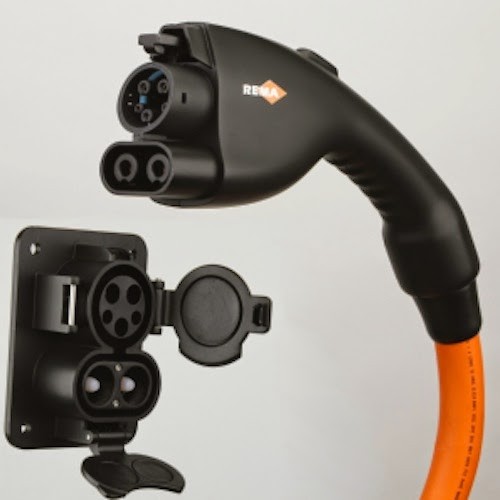 Wouldn’t another automaker supporting Tesla Supercharger as it currently stands simply feed Tesla’s business and stature?
Wouldn’t another automaker supporting Tesla Supercharger as it currently stands simply feed Tesla’s business and stature?
CCS doesn’t have to be implemented through the frankenplug. In Europe, CCS is implemented through the much nicer looking Menekes type 2 plug. There’s a number of possible options around implementing CCS on Supercharger stations, or on Tesla’s cars.
Fragmentation
The fast charging market currently breaks down this way:
- CHAdeMO – Nissan Leaf (.. and Mitsubishi i-MiEV)
- CCS – BMW i3 (.. and Chevy Spark EV)
- Supercharger – Tesla Model S (.. and Model X next year)
BMW, as the newcomer to the fast charging game, needs to create value for the i3’s fast charging port. If there are no CCS stations in the public, the i3 owners will have spent $$$’s on a fast charging port that’s useless. Nissan and Tesla both realize this, and are putting corporate money into funding fast charging infrastructure to ensure the fast charging ports on their cars are valuable to owners.
But, “will the automakers adopt Supercharger” is the question.
History doesn’t give us hope other automakers will play with Tesla
Going by past behavior I find that theory unlikely. Explaining why means taking a detour through some history.
In the previous era of electric cars – when the Gen1 Toyota RAV4 and the EV1 and so on had yet to be crushed – the manufacturers came up with two different charging standards. It was painful. But it gave manufacturers proprietary lock-in, right? Sigh.
“We” learned that proprietary lock-in at the charging cord is useless. Didn’t we? The J1772 standard was adopted by the SAE giving us a common charging cord, a single standard, right? It’s not quite that simple. Yes there’s a common level 2 charging cord, in the U.S., and that’s great. But the same is not true for fast charging. How did that happen?
In the mid 2000’s, Japan developed the CHAdeMO standard and began deploying it in 2008. CHAdeMO rose to worldwide status with worldwide sales of the Nissan Leaf. There are over 100,000 Leaf’s in the world, and a few thousand CHAdeMO stations in the world. But CHAdeMO was not a “standard” blessed by an automotive standards organization.
Today: Automakers (other than Nissan and Tesla) push for “Standardized” fast charging – meaning, Combo Charging System
An example of why this is a problem came during a public hearing in May 2012, chaired by California State Senator Corbett. The hearing was held in Fremont (not far from Tesla’s factory) to discuss the status of electric vehicle deployment. During the meeting GM’s Shad Balch laid a bombshell talking about the hodgepodge of fast charging standards, and the need to make sure taxpayer money spent on charging station deployment only be spent on ones compatible with a Standard. Balch was boooo’d at that point, because everyone knew he was arguing to delay fast charger deployment until CCS-compatible cars and stations were on the market. At that point sales of the first CCS-compatible EV was 1 1/2 years in the future, the Supercharger announcement was 4 months in the future, and Model S sales was 2 months in the future.
In early April 2014, some German automakers were quoted in the German press with a similar statement. That Tesla Motors is using a proprietary system, rather than an open system, and that speeding up electric vehicle adoption requires a standardized fast charging plug implemented by multiple manufacturers.
I agree with these Germans that we need a single fast charging system implemented by multiple manufacturers. But, their argument would be stronger if there were large numbers of CCS-compatible cars being sold. As it is, the numbers are falling in favor of CHAdeMO and Supercharger cars rather than CCS.
Insisting the only allowable fast charging deployments are for Standardized systems means that CHAdeMO and Supercharger deployment would be stalled or prevented.
Getting back to our question, “will the automakers adopt Supercharger,” the history makes this theory seem unlikely. The German and US automakers would have to backtrack repeated statements calling for Standardized fast charging.
What if Supercharger=Proprietary doesn’t prevent a solution? What if Supercharger and CCS were compatible?
Or, would they? What if the Tesla Supercharger system were actually based on the SAE standard but with proprietary extensions?
That’s the thrust of a long discussion thread on the Tesla Motors Club website – SAE J1772 DC (Combo) Connector Adapter for Model S![]() .
.
That discussion started by noting the pins similarity between the Combo Charging System and the Supercharger system. CCS was developed by the SAE J1772 committee, and started with that connector as the design base. The AC Level 2 plug uses two thick pins for power, and a few thinner pins for control signals. The North America version of CCS adds two more thick pins for DC Level 2 at up to 100 kilowatts. In Europe they’re using a different connector, but it has all the same pins.
The Supercharger cable has two thick pins that are switchable between DC and AC, a ground pin, and two pins for control signals.
 |
| This diagram shows implementation of medium speed DC charging over regular J1772 connections It shows how J1772 DC charging uses PLC control signals |
It’s known the control signals in both cases include PLC (Power Line Control) techniques. CCS uses the HomePhy protocol borrowed from the Smart Grid community, presumably making it easier to interface future electric cars with the smart grid.
The theory in that thread is this – a simple mechanical adapter plug is possible because the control signals are the same. If true, that would mean Supercharger and CCS compatible charging stations and cars could inter-operate with each using a simple adapter that doesn’t require any computerized widget in the middle to convert communication protocols. Maybe.
Tesla Motors has people on the SAE J1772 committee, and it’s noted in the thread that Tesla made proposals in the committee before CCS was ratified, but that the committee rejected Tesla’s proposals. Further, the thread quotes JB Straubl speaking in Europe last Winter that Tesla Motors doesn’t see enough CCS adoption to warrant building an adapter, but if they do an adapter will be built.
Unfortunately a simple mechanical Supercharger-CCS adapter is not possible
On another thread, a Tesla Motors Club member has been working on a DIY CHAdeMO adapter for the Model S, and has therefore been doing protocol analysis on the control signals sent during Supercharger sessions. He found that Tesla did not use the HomePhy used by CCS. Instead it uses the CANBUS protocol, and the people are working on decoding the CAN messages.
That’s a little technical, but what it means is the Supercharger is not a superset of the CCS and that a simple adapter will not be possible for Supercharger-CCS. Supercharger also does not use the CHAdeMO protocol, even though CHAdeMO also uses CAN. It’s Tesla’s own protocol, instead.
Getting back to the original question – will the other automakers adopt Supercharger? The technical deep dive showed us a simple mechanical adapter is not possible. The Supercharger control signals are not compatible with CHAdeMO nor CCS. In both cases the adapter would require a computer gizmo in the middle to translate control signals.
Tesla and other automakers could build Supercharger-CCS adapters
What we’ve discussed in this post is:
- The automakers have been fighting against non-standardized fast charging systems for years, while taking a long time to start delivering EV’s supporting standardized fast charging (CCS)
- The Supercharger is incompatible with CCS control signals, meaning an adapter between the two is feasible but not straightforward
At the technical level the hardware is tantalizingly close to a situation where Tesla could make a deal with specific automakers so that Supercharger stations recognize and can charge cars made by that automaker. Here’s a couple ideas:
- Tesla could add an additional charging cord with another connector, routing that to a system which understands HomePhy/CCS
- The automaker could provide a Supercharger adapter
What if Tesla is forced to adopt standardized fast charging systems?
Tesla may have to do something like the first option anyway. There’s a Directive being worked on by the European Union that is to eventually require all EV charging in Europe to use a Standardized charging system. It’s thought to be a way to force adoption of the Combo Charging System.
This Directive may affect Tesla’s Supercharger system because, well, it’s not Standardized. Tesla may be required to change the Supercharger system to use a Standardized charging connector? Possibly?
A Der Spiegel article![]() (it’s in German, so read it using Chrome so the article will be translated) discusses plans in Germany for a widespread network of “Charge Lounges”. It sounds a lot like an idea I wrote up a couple weeks ago – they’re envisioning charging stations colocated with coffee service, and a waiting area with WiFi access. This “charge lounge” concept is described by Der Spiegel as the “German answer to the Tesla success story.” And as a slam against Tesla, says that no electric vehicle driver is marginalized.
(it’s in German, so read it using Chrome so the article will be translated) discusses plans in Germany for a widespread network of “Charge Lounges”. It sounds a lot like an idea I wrote up a couple weeks ago – they’re envisioning charging stations colocated with coffee service, and a waiting area with WiFi access. This “charge lounge” concept is described by Der Spiegel as the “German answer to the Tesla success story.” And as a slam against Tesla, says that no electric vehicle driver is marginalized.
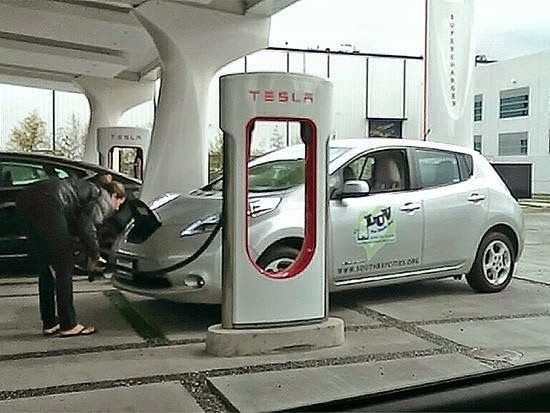
As cool as the Tesla Supercharger system is – it does “marginalize” drivers of other electric cars.
The principle we learned after the previous wave of electric cars is – the public charging network needs to support all electric cars. The hodgepodge of incompatible fast charging protocols is not serving anyone. The Supercharger network is only serving Model S owners, and the rest of us are left in the cold.
In fact, the fragmented fast charging situation we have today is one of the factors delaying electric vehicle adoption. If there was commonly accepted fast charging available in every electric car don’t you think it would sway some of the fence sitters to buy electric?
Conclusion
I apologize that this went on for quite some length.
We collectively need to adopt electric vehicles as quickly and ubiquitously as possible as part of an overall effort to stave off climate change greenhouse gas stuff. We’re in an emergency that unfortunately will take a few decades to unfold which means most of our brethren are unable to recognize the problem because it’s not an immediate threat.
Tesla’s mission statement is to speed up electric vehicle adoption. It’s widely thought that if there were widespread fast charging in all electric cars, that would speed up adoption. But, the fragmented situation is not helping.
It’s tantalizing to think Tesla and the other automakers are discussing opening the Supercharger network to support cars from other manufacturers.
- Highway design could decrease death and injury risk, if “we” chose smarter designs - March 28, 2015
- GM really did trademark “range anxiety”, only later to abandon that mark - March 25, 2015
- US Government releases new regulations on hydraulic fracturing, that some call “toothless” - March 20, 2015
- Tesla Motors magic pill to solve range anxiety doesn’t quite instill range confidence - March 19, 2015
- Update on Galena IL oil train – 21 cars involved, which were the supposedly safer CP1232 design - March 7, 2015
- Another oil bomb train – why are they shipping crude oil by train? – Symptoms of fossil fuel addiction - March 6, 2015
- Chevron relinquishes fracking in Romania, as part of broader pull-out from Eastern European fracking operations - February 22, 2015
- Answer anti- electric car articles with truth and pride – truth outshines all distortions - February 19, 2015
- Apple taking big risk on developing a car? Please, Apple, don’t go there! - February 16, 2015
- Toyota, Nissan, Honda working on Japanese fuel cell infrastructure for Japanese government - February 12, 2015




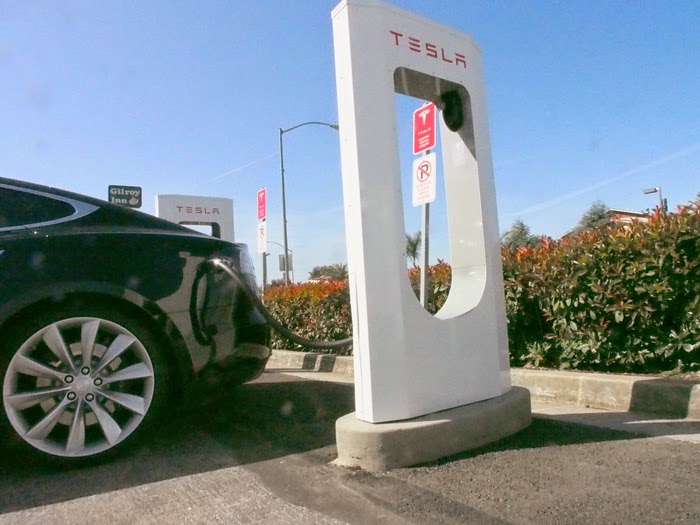

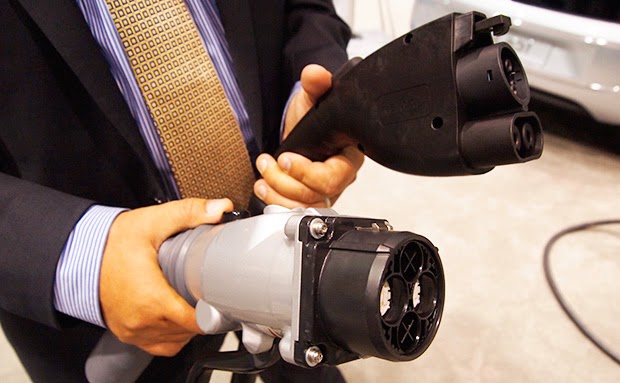

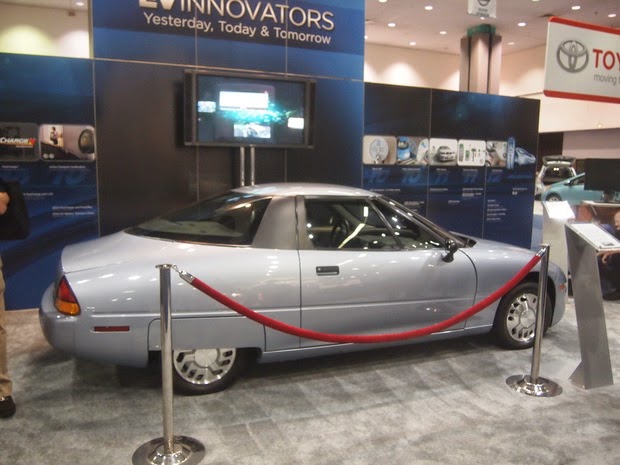








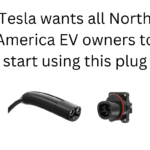
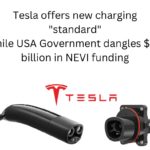



Why would anyone want the company responsible for the Fukushima nuclear plant disaster to control our electric vehicle charging standard. Praise Tesla Motors for releasing us from the claws of the atomic monster!
The Fukushima nuclear disaster had nothing to do with charging connectors – and a lot to do with Westinghouse and their nuclear plant design
The CHAdeMO standard is now owned by the CHAdeMO Association in any case.
Pingback: Tesla announces the North American Charging Standard charging connector – The Long Tail Pipe